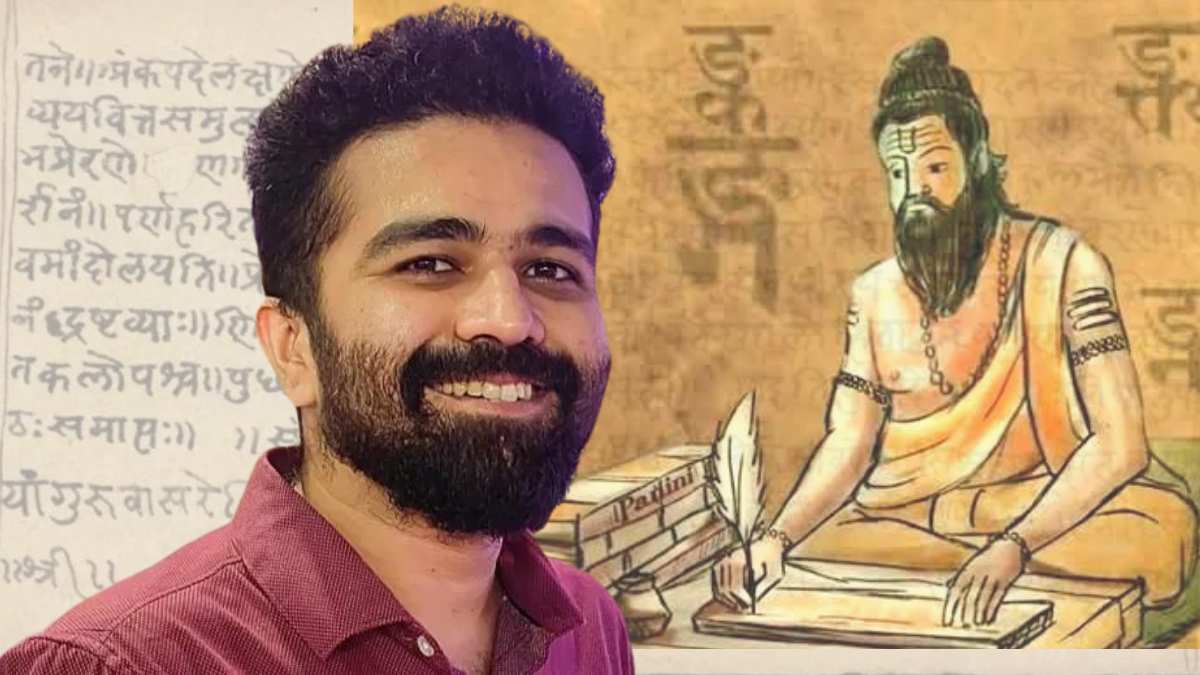
In some inspiring news, an Indian student at Cambridge University has decoded a 2,500-year-old Sanskrit grammar problem. Rishi Atul Rajpopat is a PhD student at St John’s College at the University of Cambridge.
After months of hard work, Rajpopat succeeded in deciphering the grammatical rules of the ancient Indian Sanskrit scholar Panini. Panini was a famous linguist who created extensive grammatical rules for Sanskrit. However, Panini’s rules have puzzled historians and linguists for thousands of years.
Although Sanskrit is considered the best language for creating computer codes and algorithms, Panini’s rules caused conflicts in learning Sanskrit. However, Rishi Rajpopat proved that Panini was right from the start and his rules just needed to be reinterpreted from a fresh perspective.
Read on to find out what Rajpopat discovered and how it influenced Sanskrit.
Who is Panini?
Panini was a philologist, linguist and Sanskrit scholar who lived in India between the 4th and 6th centuries BC. Historians do not agree on the timeline of Panini’s life and works.
Panini is considered the “Father of Linguistics” for his work in developing the Sanskrit language. Panini’s most famous work, Astadhyayi, is a comprehensive treatise on Sanskrit containing 3996 verses or rules on linguistics, syntax and semantics.
Astadhyayi is one of the most complex and methodical works in linguistics. Panini created a complex algorithmic system to manage the Sanskrit language. Each word has a base and suffix, which, depending on the rules, changes and forms new words.
Why can’t scholars find out Panini’s Sanskrit rules?

Image credit: Cambridge University Library
Unlike other languages, Sanskrit is a logic and formula based language, without any exceptions or conflicting rules. That’s something people hear all the time.
Even NASA has concluded that Sanskrit is the most suitable language for coding and artificial intelligence. However, due to the complexity of Panini’s nearly 4,000 grammatical rules, scholars have difficulty accurately interpreting his ideas.
In some cases, two or more Panini rules are applied simultaneously. For such cases, Panini built another rule, a meta rule to override the previous rules. Sanskrit scholars have misinterpreted this super rule for 2,500 years and only now has it been correctly deciphered.
What are Panini’s Meta Rules?
Panini wrote a meta-rule in case of conflict, which scholars explain as: “in case of conflict between two rules of equal strength, whichever rule comes later in the order of succession of Aṣṭādhyāyī, will win.”
Scholars conclude that in case of conflict in the application of two or more rules, the rule that comes later in Astadhyayi’s sequential order shall be applied.
This often results in incorrect words that contradict Panini’s previous rules. However, these conflicts are so rare that scholars consider them exceptions.
But the meta-rule continued to confuse scholars as Panini wrote an almost perfect and highly logical set of rules that rarely resulted in any contradictory or incorrect words, yet the meta-rule did can do that.
For example, the word “word god” consists of two words “deva” and “bhis”. To join these two words, apply Astadhyayi’s two rules – rule 7.1.9 on “bhis” and rule 7.3.103 on “deva”. According to meta rules, the rule that appears later will be applied, i.e. 7.3.103.
However, this results in the incorrect word “devebhih”, while the correct Sanskrit word is “devaiah”, based on rule 7.1.9.
How did Rishi Atul Rajpopat solve Panini’s 2,500-year-old grammar problem?

Image credit: Cambridge University Library
Cambridge PhD scholar Rishi Atul Rajpopat studied Panini’s 2,500-year-old Sanskrit grammar problem for almost a year before he discovered the solution.
In a eureka moment, Rajpopat suddenly realized that perhaps Panini was referring to the “back” side of a word. As Rajpopat delved deeper into his theory, he discovered the correct interpretation of Panini’s superrule: in case of conflict, the rule that applies on the right side of the word will have a role to play. paramount.
And although the solution seemed extremely easy, Rajpopat almost gave up before discovering it.
“I had a eureka moment in Cambridge,” Rajpopat told The Print. After 9 months of trying to solve this problem, I’m almost ready to give up, I’m getting nowhere.” “So I closed my books for a month and just enjoyed the summer, swimming, cycling, cooking, praying and meditating. Then, reluctantly, I went back to work and within minutes, when I turned the pages, these patterns started to appear.” , and everything started to make sense. There’s still a lot of work to do but I’ve figured out the biggest part of the puzzle.”
How will Rishi Rajpopat’s discovery affect Sanskrit?
Sanskrit is an ancient language that was once widely used in conversation, writing, and philosophy. It is now in decline and there are only 25,000 Sanskrit speakers left in India. The Indian government is promoting Sanskrit, and Rishi Rajpopat’s achievement will give a much-needed boost to Sanskrit. Even Rajpopat’s supervisor and Sanskrit professor at Cambridge, Vincenzo Vergiani, agreed.
“My student Rishi has deciphered it – he has found an extremely elegant solution to a problem that has puzzled scholars for centuries. This discovery will revolutionize the study of languages. Sanskrit at a time when interest in the language is growing.”
Also read: Sanskrit Week 2021: PM Modi urges Students, Educational Institutions to promote and popularize ancient language
Also read: Hindi Diwas 2022: Date, history, significance and key events
Categories: Optical Illusion
Source: pagasa.edu.vn